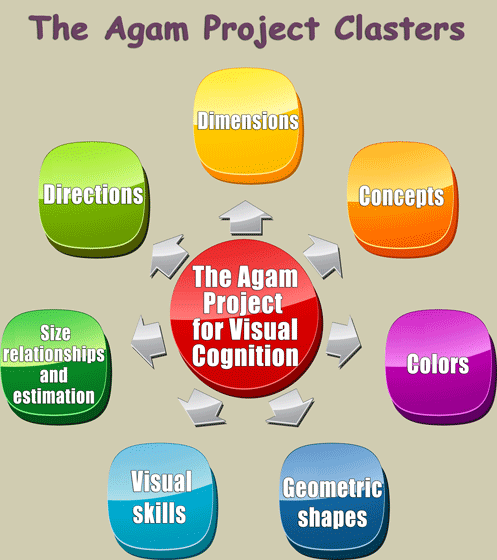The vehicle for achieving the project's goal is through a systematic and innovative curriculum of 36 units. Some of the units introduce students to such basic visual concepts as the main geometric shapes (circle, square, triangle, etc.) , directions (horizontal, vertical, oblique), colors, size relationships and visual skills (identification, memory, reproduction). These units make up a "visual alphabet" that form the basis for more advanced concepts such as symmetry, ratio and proportion, numerical intuition, dimensions (one, two, three, and even four) and other concepts that serves as building blocks in scientific and mathematical thinking.


